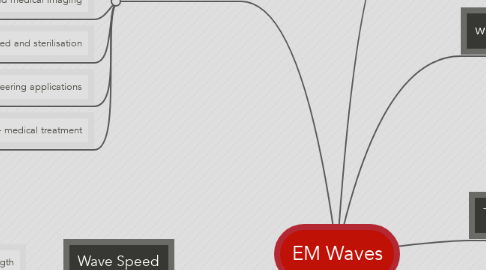EM Waves
par Kendric Lai Weixin


1. Frequency of wave
1.1. number of complete waves in a second
1.2. Hertz(Hz) is the SI unit
2. Period of wave
2.1. time taken to complete one full wave
2.2. T=1/F
3. Wave Speed
3.1. calculated by using frequency X wavelength
4. Applications
4.1. Radio Waves- radio and television communication
4.2. Microwaves-Satellite television, phone and microwaves
4.3. Infra-red rays- remote control or intruder alarms
4.4. Visible light- Optical fibres for communication and medical imaging
4.5. Ultra-violet rays- sunbed and sterilisation
4.6. X-rays- radiology and engineering applications
4.7. Gamma rays- medical treatment
5. parts of a wave
5.1. wavelength
5.2. amplitude
5.2.1. Session Rule 1
5.2.2. Session Rule 2
5.3. trough
5.4. crest/peak
6. when will it occur
6.1. energy transferred through a medium
7. Two different types of waves
7.1. Transverse Waves
7.1.1. particles move in up and down motion
7.1.2. particles vibrate in a perpendicular direction to the wave direction
7.2. Longitudinal Wave
7.2.1. particles move in sideways direction
7.2.2. particles of the wave move in parallel direction of the wave
